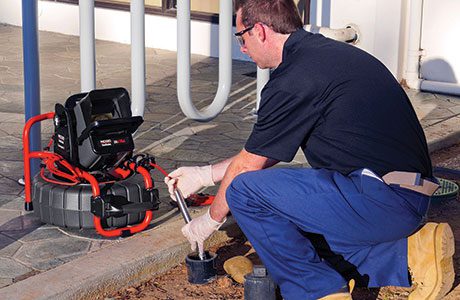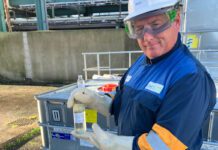
INSPECTION using CCTV equipment has become the norm when it comes to understanding the state of repair and the operational condition of most pipeline networks. What has changed most significantly over that time has been the level of information that can now be obtained, stored and analysed as compared to the early days of the method.
There has been a call for higher levels of sophistication in terms of the ability to record inspections quickly and easily. The challenge has been to incorporate such capabilties in a small and affordable unit, not to mention one that is robust. Such devices are always on the move, being passed in and out of vans.
Small diameter pipes
Robustness is of particular importance with small diameter pipelines, where access to pipes is often through small, often poorly placed accesses. Sometimes it might be through the bathroom and toilet fittings themselves. So equipment that is overly sensitive in difficult environments simply will not survive the usage. An example of a company claiming to offer a solution here is RiDGID, part of the Emerson Group.
RIDGID has developed a range of CCTV inspection systems specifically for this type of arduous workload including both the SeeSnake® Compact2 and SeeSnake Max rM200 systems. The designs are all presented as end-user friendly.
The SeeSnake range is designed for the inspection of small to medium diameter pipelines from 20 mm up to 300 mm. The latest RIDGID SeeSnake Systems allow contractors to get excellent access and a clear picture in a wide variety of residential, commercial or industrial drainage situations that may not be possible to achieve with larger types of equipment.
The SeeSnake Compact2 system is a durable and lightweight (10 kg) unit that offers a 25 mm diameter self-Levelling camera that provides a crisp, clear, always upright image of the inside of pipes from 40 mm to 150 mm diameter. The Compact2 is also said to be a very portable package for convenient transportation and storage.
The unit offers a monitor docking system that enables a fast and efficient setup using the RIDGID CS6Pak digital recording monitor which comes with a water-resistant keypad. Mounting and de-mounting of the monitor is quick and easy using ½ turn locking keys.
With a new generation, flexible control cable of just 6 mm diameter, the unit operates over pipe lengths up to 30 m, for “outstanding manoeuvrability”. Surveys are digitally recorded direct-to-USB using an 8 Mb memory stick provided with the unit. HQ™ Software can be used to edit, archive, and deliver reports with print, DVD or online formats. The precise location of the camera can be monitored with the built-in FleXmitter™ sonde which also allows the route of the pipeline to be established as well as its condition. There is also an integrated microphone and speaker, as well as a new monitor video overlay feature that enables the operator to add measurements, date and time information to the recording data.
The SeeSnake Max rM200 system is designed for use on a wider range of pipes with the facility to work in pipes from 40 to 200 mm diameter. With sufficient cable to inspect pipes of up to 61 m length, the SeeSnake Max rM200 utilises the RIDGID CS6 digital recording monitor, which offers the same features as the CS6Pak used with the Compact2, as well as the same self-Levelling camera head and FleXmitter sonde system. In the case of the SeeSnake Max rM200, the 17 kg unit is easily handled using the integrated transport cart which includes a handle and strap for easy transport to, from and around job sites. The rM200 also has an integrated stow bin for the convenient storage of tools and other essentials, increasing operator efficiency.
Both the SeeSnake Compact2 and the SeeSnake Max rM200 systems can be powered by a rechargeable 18 V Lithium 4.0 Battery or using an AC battery adaptor. In independent tests both the SeeSnake Compact2 units and the SeeSnake Max rM200 systems have been shown to meet not only the increasingly high-tech requirements of the modern CCTV inspection industry but – just as important, says RIDGID – they are both durable and reliable, able to withstand the constant use and very high productivity required of them in the field today.






